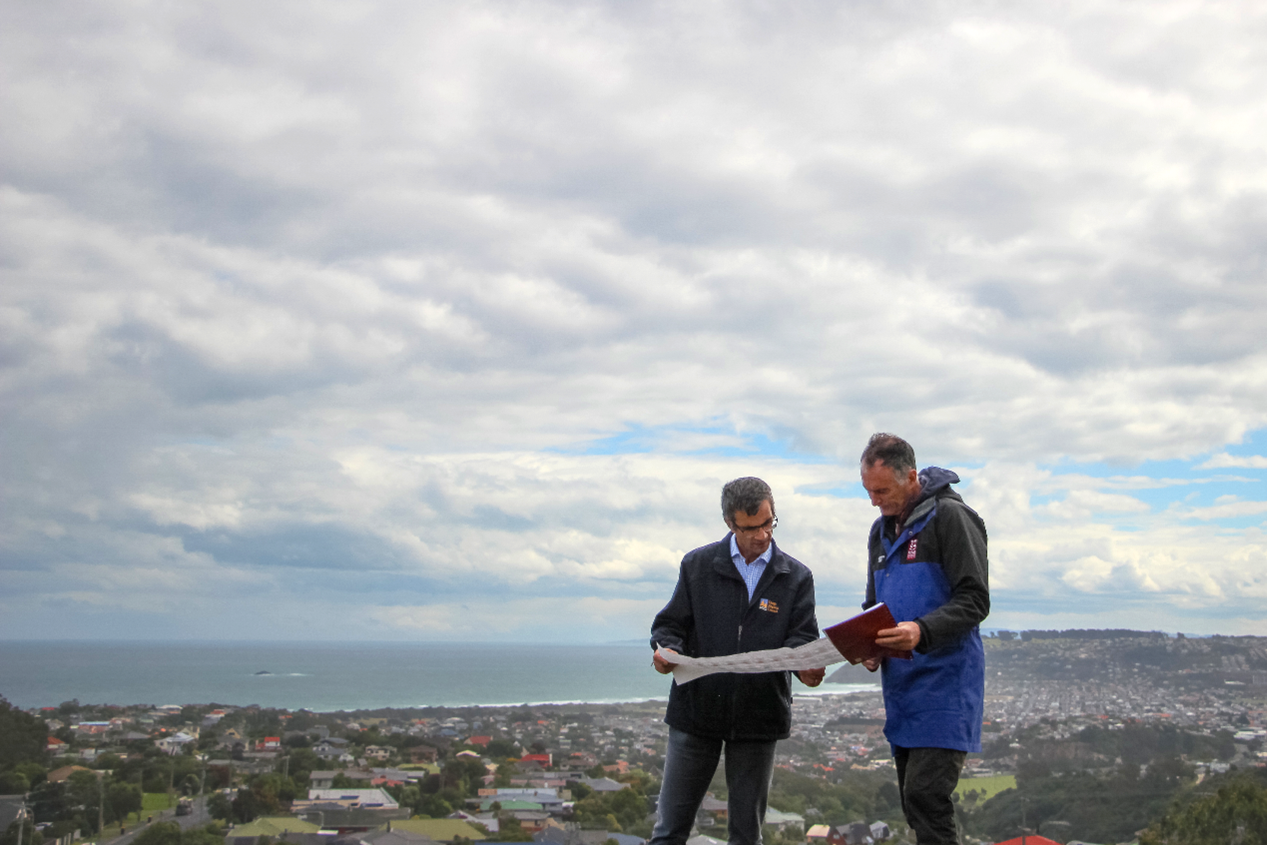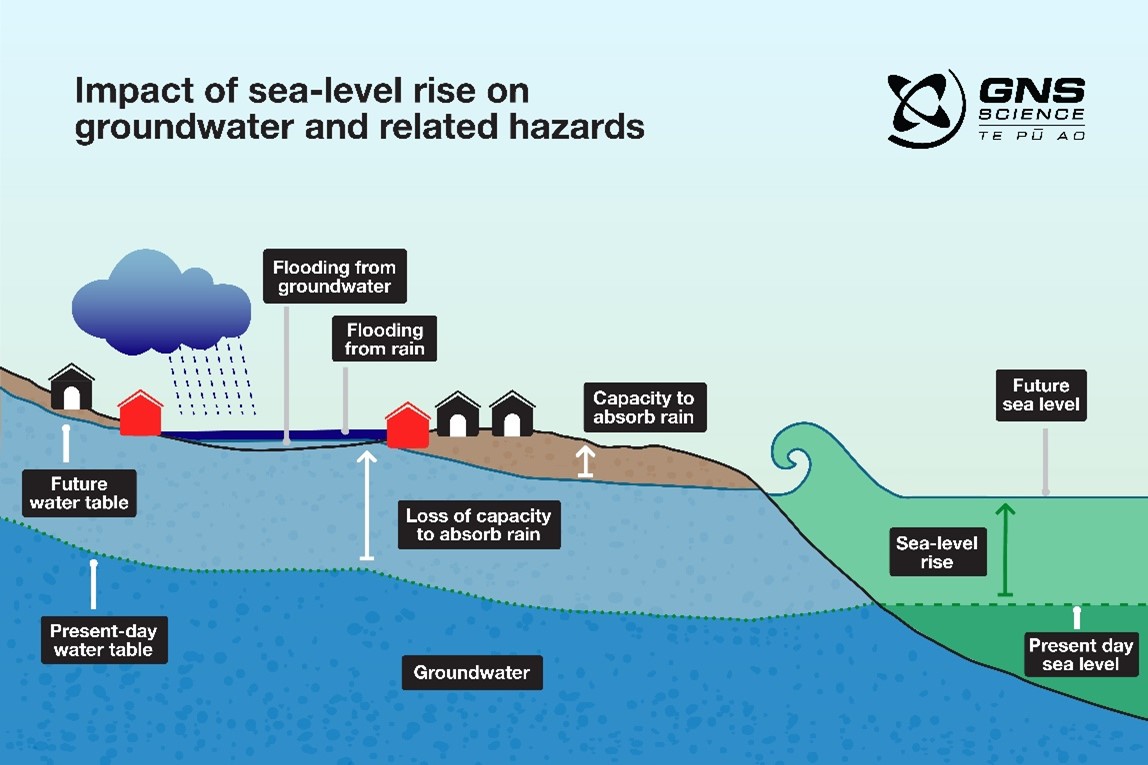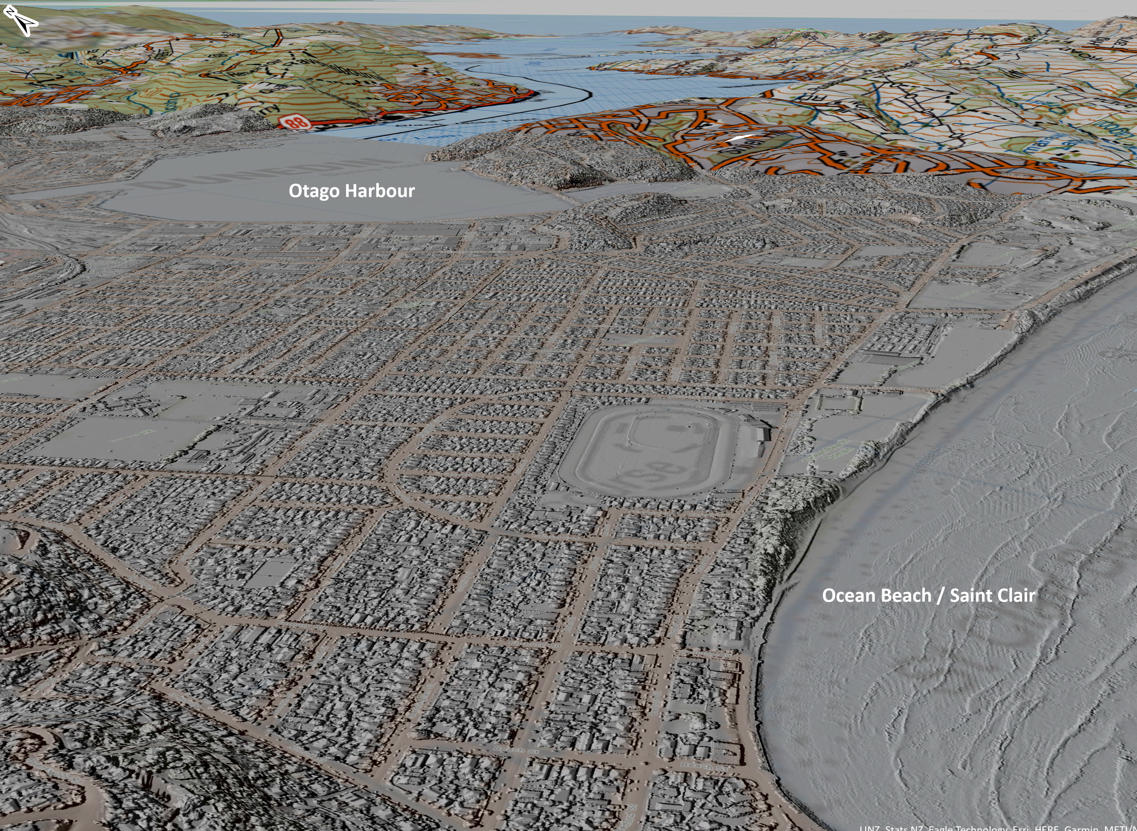The study, based on analysis of four years of data from the ORC-operated groundwater monitoring network in South Dunedin and Harbourside, looked at what causes change to groundwater levels, such as tides, storm surge and rain. This information was used to forecast where and when groundwater will rise and cause problems in the future.
GNS Science Principal Scientist Dr Simon Cox says, “The flat low-lying coastal land of Harbourside and South Dunedin is vulnerable to effects from the harbour and ocean. Our study shows that in some areas, as the sea level rises, groundwater will contribute to flood problems in two ways – through loss of capacity to store rain, and then flooding from below – and this can be expected before any inundation directly from the sea.”
While the findings show lesser impact for Harbourside, in South Dunedin rising groundwater is likely to be at the heart of issues as sea levels rise. Both areas are integral to how Dunedin presently functions, so the findings have implications for the whole city.
Shallow groundwater near the coast is controlled by sea level and is expected to rise as sea levels rise. Although the water table (upper surface) always rises and falls, as its average position reaches ever closer to the surface it will generate a variety of issues for the city to address.
The report will be discussed at the Otago Regional Council Safety and Resilience Committee meeting on 8 February.
Otago Regional Council Manager Natural Hazards, Dr Jean-Luc Payan says, “This unique research is key to understanding the complexity of what is happening under the ground in South Dunedin and Harbourside area. It builds on monitoring work ORC and GNS have been doing together since 2009.
It provides a detailed picture of where and when issues will arise, mapped out against 10cm increases in sea-level rise. This helps us to understand how hazards will evolve and enable planning for the future. It’s an important tool in determining adaptation options for the future of South Dunedin.”

Dr Jean-Luc Payan (ORC) and Dr Simon Cox (GNS) with South Dunedin in the background
The findings will help to inform the South Dunedin Future programme – an ORC and Dunedin City Council partnership to find ways to respond to climate change, sea-level rise and flooding problems in South Dunedin.
Dr Cox says “The forecasts of the different groundwater-related impacts are based on increments of sea-level rise. We know that sea-level rise is already happening but cannot be specific about the timeframe of exactly how quickly - which depends on global warming and international efforts to reduce emissions. So, we measure what is happening now and forecast at 10cm steps in sea level, estimating the expected timeframes based on the variety of different Intergovernmental Panel on Climate Change (IPCC) emissions scenarios.”
“The research shows that Dunedin needs to plan for water coming from above, below and sideways from the harbour ocean. There are some tidal effects near the coast but most of South Dunedin is sitting on relatively old, thick mud which groundwater moves slowly through, and this may mean there are more options for the future.”
Shallow groundwater causes many problems as it rises, including inundation of stormwater and wastewater systems, building instability and liquefaction vulnerability. Eventually it can lead to flooding from below when groundwater emerges at the surface as springs and causes local ponding.
The forecast changes for South Dunedin are:
- As groundwater rises, the ability for rainfall to be absorbed into the ground like a sponge decreases. This exacerbates existing rain-related flood issues. This is likely to remain the dominant issue for the next 30 to 40 years.
- Groundwater rising to the surface will move from periodic occurrences (at less than 40cm of sea-level rise expected) to permanent springs and/or flooding (after 40cm of sea-level rise has been reached as early as about 50 years from now).
- Groundwater-related issues are expected to occur well before the sea inundates land, at least locally in South Dunedin due to the protection sand dunes offer against high-tide. Coastal inundation from the harbour is unlikely to occur until 60-70 cm of sea-level rise (expected around 2100 or later).

This is the first study in New Zealand, and likely internationally, to model groundwater’s contribution to multiple sources of flooding hazard. It looks at the episodic and acute hazard conditions that develop as a result of rising groundwater, rather than focusing on long-developing permanent inundation. Groundwater may eventually require substantial management in coastal settings like Dunedin.
“Drawing upon the comprehensive data provided by the groundwater monitoring network was crucial for this research and highlights the value of the partnership between Otago Regional Council and GNS Science. The new understanding gained about the interplay of groundwater related hazards will be vital for strengthening Dunedin’s climate resilience, and also holds important insights for other coastal areas in New Zealand that will face similar challenges in the future,” says Dr Cox.



